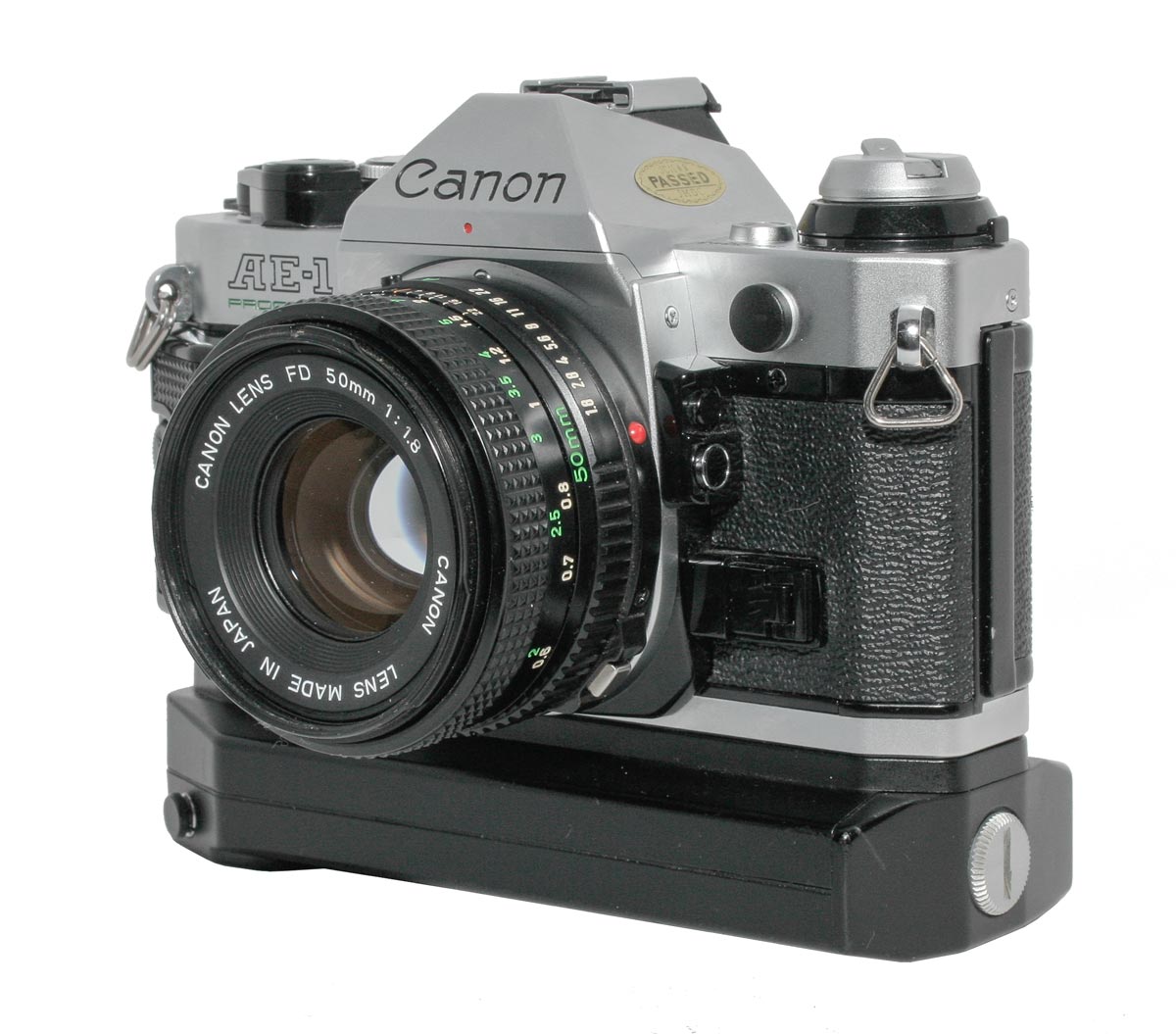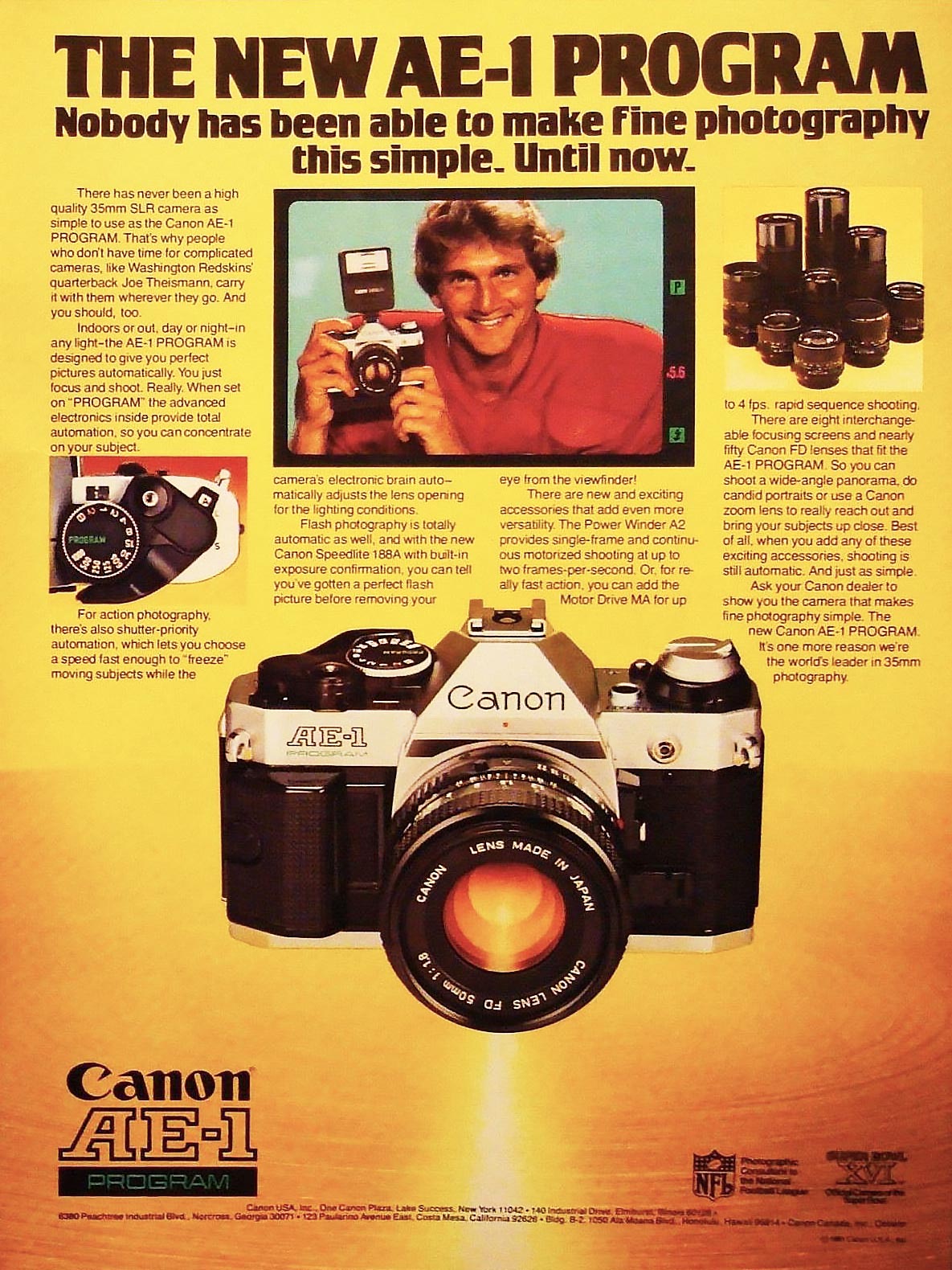The “A” series was rooted in the past. It looked and felt like the cameras of the earlier “F” series and seemed far removed from the “T” series that was to follow it. All of these cameras still had a horizontal cloth shutter, still had to be wound manually and had a rewind crank to wind the film back into its cannister when the roll was finished.
The AE-1 was extremely popular and sold millions of copies world wide. That is why the AE-1 is so ubiquitous today in the collector market. It was advanced, for the 1970’s, but was priced for the amateur photographer. It had more than a built in light meter: it had the ability to set the aperture automatically so that the user had only to select a shutter speed and the camera did the rest. We take “Shutter Priority” mode for granted now but at the time it was revolutionary.
In 1978 Canon introduced the A-1 which was a more expensive camera designed for the advanced amateur or professional. This was a landmark camera because it offered fully automatic, shutter or aperture priority or manual modes. It was only released in an all back version and was a beautiful thing to hold. Expensive but wildly popular. And justly so!
The A-1 made the entry level AE-1 look a little tired and Canon concluded that an upgraded AE-1 was needed aimed at that same market; an entry level camera with enough advanced features to attract amateurs and casual shooters alike. The result was the AE-1 Program.
The other feature of this camera that made it so popular was its ability to accept most of the accessories that were used on the AE-1 and the A-1. It accepted the Auto Winder “A” which was created for the AE-1. It would also accept the Auto Winder “A2” and the Motor Drive MA developed for the A-1. So a new owner of this camera had access to a mature line of accessories and lenses.
Like the A-1, the AE-1 Program also had user changeable focusing screens of which there were eight available. This is an interesting feature for an entry level camera.
The AE-1 rogram is backward compatible with the Winder “A” which was originally created for the AE-1.
In the film compartment there is little difference between the AE-1, the A-1 and the AE-1 Program. Film handling is identical with each of them.
The controls are positive and the shutters release cleanly. There is no obvious difference in handling. What differences there are reside in the features that each offers. To use the Program mode on the AE-1 Program one sets the shutter dial to the green “Program” setting and the lens to Automatic. Both must be done but once done the camera takes over the exposure control. In the viewfinder there is a green LED “P” and the f stop setting is shown in red.
Leave the lens in automatic mode but select a shutter speed and you are functioning in Shutter Priority or “Tv” mode. The viewfinder will show the aperture the camera chooses in red LED numerals.
Take the lens off automatic, select an aperture and shutter speed and you are working in manual mode. In the viewfinder the camera will tell you what f stop it recommends but you are not obliged to take the advice. That’s what “manual” means!
This camera also came in an all black model. Very sexy but it was still the same AE-1 Program camera. This camera is shown with the Power Winder “A2”.
If you are shooting 35mm film, or want to, this is a great camera to shoot with. No “mercury” battery required. The battery that is required is easily available. It is an automatic camera but sufficiently rooted in the previous totally manual cameras that it provides a very retro experience. It comes in silver finish or black and there are still lots of fully functional examples available in the collector market.
I have the following silver copy:
Collection Number: C-161
Serial Number: 3945646
Condition: Excellent
Notes: As you can see in the photos above, this camera is in wonderful condition and it is fully functional. I have used it and it is a pleasure to shoot.
I also have the following black copy:
Collection Number: C-116
Serial Number: 3544642
Condition: Excellent
Notes: You can see in the photo above that this camera, too, is in great condition. It is also fully functional. I like the black finish. The paint they have used is a silky semi gloss and it makes the camera stand out. Unfortunately it is subject to “brassing” and so must be treated with respect. In that regard, the silver finish appears to be the more durable.













